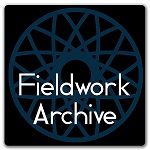Shared Sacred Sites contains numerous resources for anyone wishing to learn more about the description, classification, analysis, and publication of work relating to spaces and locations used by multiple, disparate communities for religious purposes. Below is a list of resources available on sharedsacredsites.net:
Fieldwork Archive
The Fieldwork Archive collects ethnographic materials on sacred sites and communities, including images, audios, videos, field-notes, and ethnographic essays. It is designed to classify, organize, and share links to fieldwork materials concerning these sites that have been used, shared, transferred, or are otherwise connected to multiple communities. The Fieldwork Archive provides direct access to the actual materials through hyperlinks and downloadable files, unlike the Repository, which presents bibliographic references (citations) to published works.
Click the icon to see the Fieldwork Archive:
Repository
The primary tool shared by most of the projects on the website is the repository, a catalog of references to bibliographic and multimedia publications on the subject of shared sacred sites. The catalog providing references and links to a large collection of relevant materials used in the study of shared sacred sites. While this typically means references to traditional (offline) books and articles, increasingly this material is appearing online, and wherever possible a hyperlink to the publication is provided. The repository is continually enhanced through the addition of new publications.
To browse the Shared Sacred Sites repository, please go here: http://sharedsacredsites.net/repository/
Visual Hasluck
Visual Hasluck is a digital humanities project undertaken as part of the “Shared sacred sites and the politics of pluralism” research initiative, funded by the Luce Foundation. Using text analysis, mapping and visualization tools, it provides an open access, visual and geo-spatial reading of “Christianity and Islam under the Sultans” (1929), a milestone work by British archaeologist Frederick W. Hasluck.
To visit the site, click the icon below:

